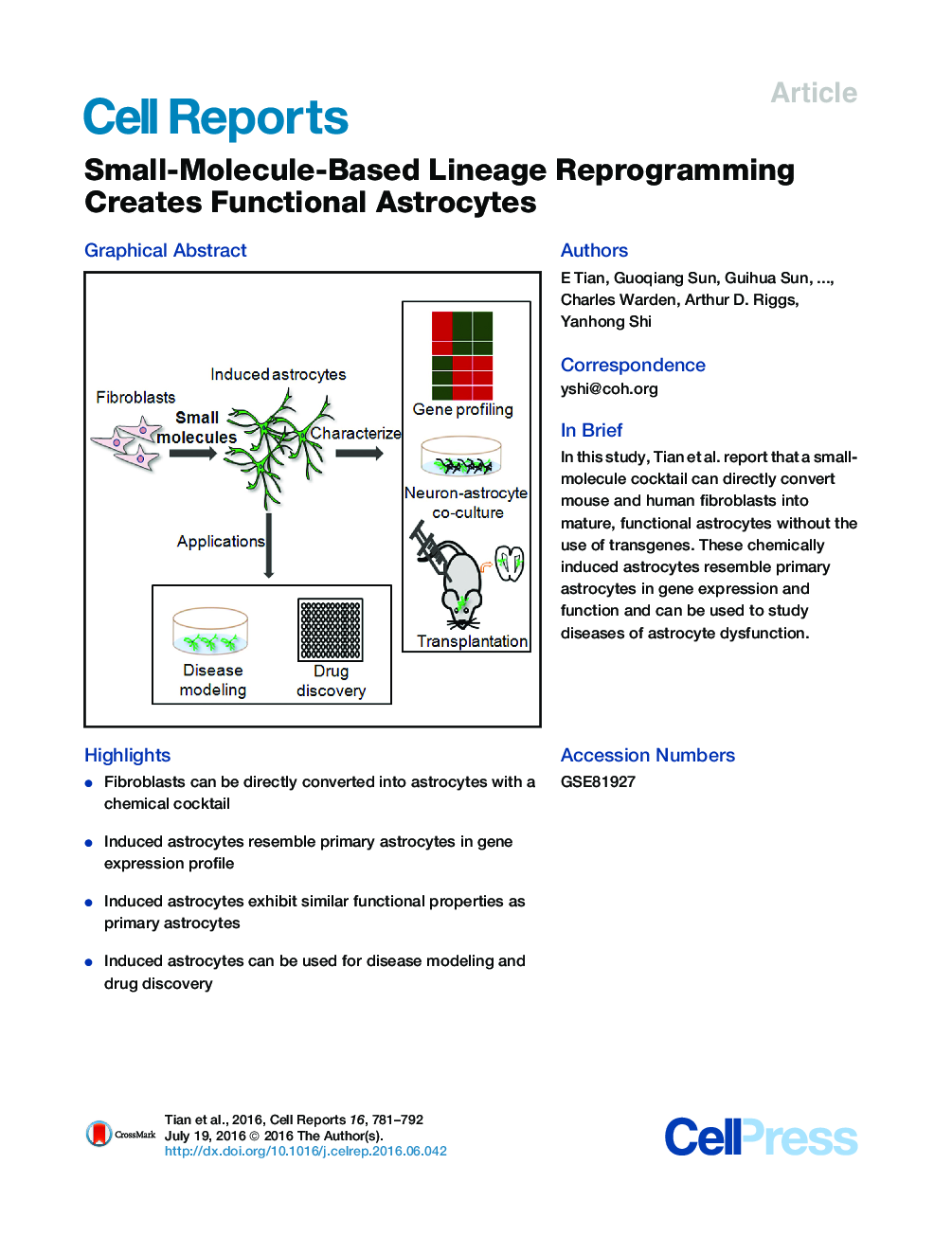| Article ID | Journal | Published Year | Pages | File Type |
|---|---|---|---|---|
| 2040115 | Cell Reports | 2016 | 12 Pages |
•Fibroblasts can be directly converted into astrocytes with a chemical cocktail•Induced astrocytes resemble primary astrocytes in gene expression profile•Induced astrocytes exhibit similar functional properties as primary astrocytes•Induced astrocytes can be used for disease modeling and drug discovery
SummaryGrowing evidence indicates important roles for astrocytes in neurodevelopment and diseases. However, astrocytes and their roles in these processes remain poorly understood. Despite recent progress in reprogramming somatic cells into different types of neural cells, reprogramming to astrocytes has lagged. Here, we show that functional astrocytes can be generated from mammalian fibroblasts using only small molecules. Induced mouse astrocytes resemble primary astrocytes in astrocytic gene expression and epigenomic status and exhibit functional properties in promoting neuronal maturation, glutamate uptake, and calcium signaling. Moreover, these cells can recapitulate the Alexander disease phenotype of protein aggregation when expressing Gfap with a disease-causing mutation. The same compounds can also reprogram human fibroblasts into astroglial progenitor cells that can further mature into functional astrocytes. These chemically induced astrocytes may provide cellular models to uncover roles of astrocytes in normal neurodevelopment and pathogenesis of neurological diseases.
Graphical AbstractFigure optionsDownload full-size imageDownload as PowerPoint slide
